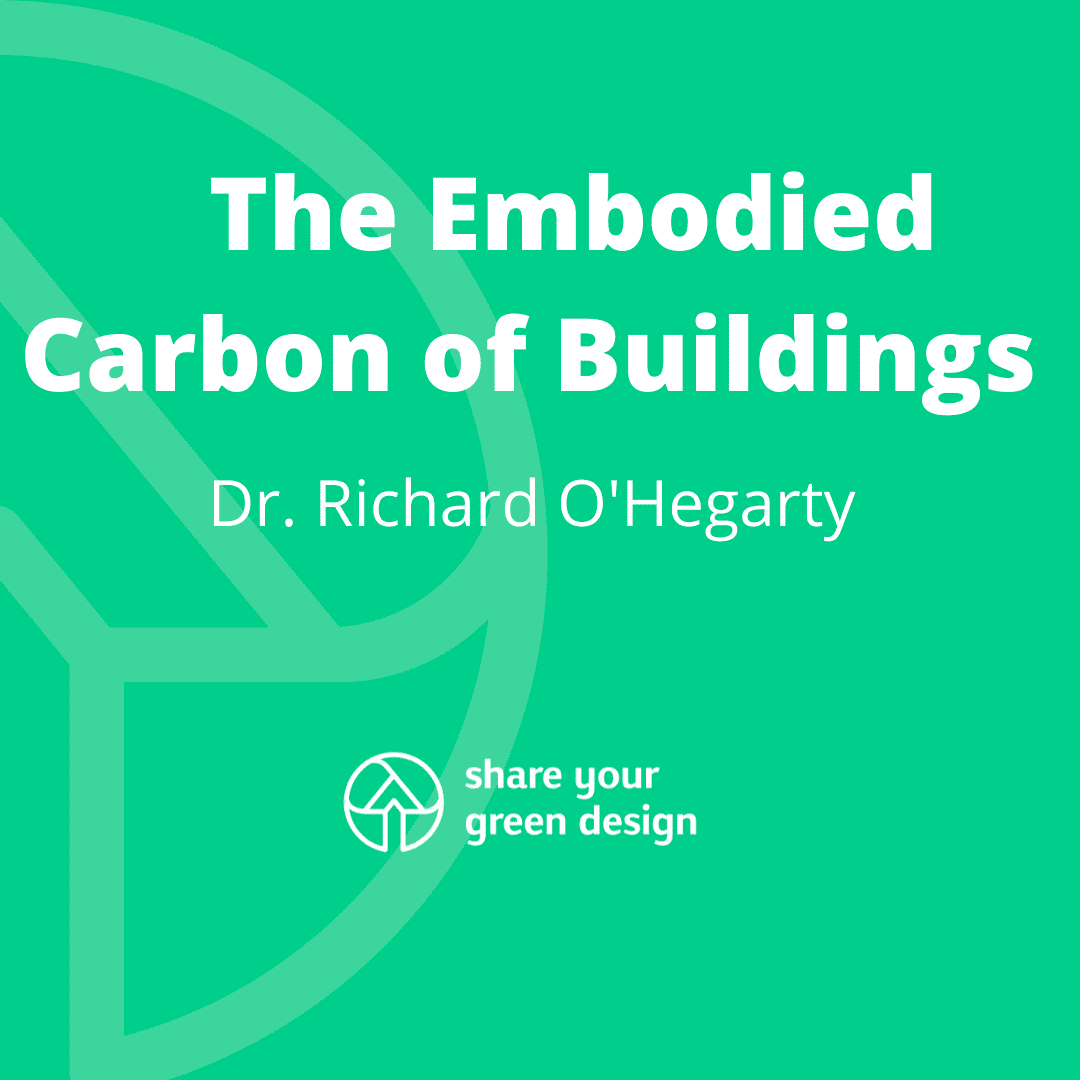The Embodied Carbon of Buildings

News Detail

Year:
2022
Country:
IrelandDr. Richard O’Hegarty
Over the last number of years, research groups in the building Life Cycle Assessment (LCA) space have been working hard to unearth the answer to the question more of us keep asking:
“How much carbon do buildings embody?”
The metric used to answer this question is typically served in terms of ‘embodied carbon per m2 of floor area’ (kgCO2e/m2) i.e. the amount of carbon emitted when producing, transporting, and assembling the materials used in a building — divided by its floor area1 (the upfront carbon). Depending on the scope of the study, the embodied carbon associated with maintaining, demolishing and reusing those materials might also be included (the whole life carbon).
What these research groups are looking for is a benchmark. And the importance of having one is crucial — if we don’t not know where we are starting from, how can we set a meaningful target?
Well, let’s take a look at some of the key studies to date.
In 2017 a group of researchers from the University of Washington published a study covering 1,007 buildings (Simonen et al. 2017). This considerable sample was taken predominantly from office buildings, but also included some residential buildings. The authors found that the embodied carbon of buildings varied widely depending on function, location, and even individually within the various categories. The average upfront carbon of 425 office buildings equated to 503 kg CO2e/m2 while the average of 78 residential buildings was 402 kg CO2e/m2.
More recently, a study set up by Ramboll and BUILD AAU (Aalborg University with the support of the Laudes Foundation) collected LCA data for 769 case studies in Europe. The authors found that the average embodied carbon emissions over the full life cycle of a residential building equates to approximately 600 kg CO2e/m2 – with upfront carbon accounting for approximately two thirds of this (400 kg CO2e/m2).
These are two of the largest, if not the largest, LCA data sets prepared, analysed and published. And while there is good agreement between the two studies, can we say with certainty that a residential building embodies 400 kgCO2e/m2 on average?
When we consider a third source of information, the answer appears to be “No!”.
The RIBA Climate Challenge specifies 1200 kgCO2e/m2 for a ‘business as usual’ case for whole life carbon. Which equates to 850 kgCO2e/m2 of upfront carbon, or an “E” rating, on the LETI Carbon Target Alignment. These values are almost double the figures reported in the other two studies while RIBA’s 2030 whole life carbon target (of 625 kgCO2e/m2) is almost equal to the benchmark.
So the question is – why?
Below are three possible reasons as to why this might be the case.
- The first two reports are unrepresentative of all new builds. This point is mentioned in the Ramboll study as one of the major challenges we face.
- The embodied carbon of buildings in the UK and Ireland are simply significantly more (x2) than the rest of Europe and North America.
- The sample used to identify the RIBA challenge benchmark is too high and hence not representative of the building stock.
Perhaps the most concerning theory is the latter, in that a 40% carbon reduction target set from an overestimated benchmark will result in no meaningful impact.
Whatever the explanation, it is clear we still need more data and more research conducted on this topic.
The search for the benchmark goes on!
Footnotes
1 – The definition of floor area is, itself a topic of debate. But generally gross floor area is used in line with ISO 6707-1.
References:
Kathrina Simonen, Barbara X. Rodriguez & Catherine De Wolf (2017) Benchmarking the Embodied Carbon of Buildings, Technology | Architecture + Design, 1:2, 208-218, DOI: 10.1080/24751448.2017.1354623
Röck, Martin, Sørensen, Andreas, Tozan, Buket, Steinmann, Jacob, Horup, Lise Hvid, Le Den, Xavier, & Birgisdottir, Harpa. (2022). Towards embodied carbon benchmarks for buildings in Europe – #2 Setting the baseline: A bottom-up approach. Zenodo. https://doi.org/10.5281/zenodo.5895051
Royal Institute of British Architects. 2022. Join the 2030 Climate Challenge. [online] Available at: <https://www.architecture.com/about/policy/climate-action/2030-climate-challenge/sign-up> [Accessed 29 May 2022].
The London Energy Transformation Initiative (LETI) 2021. Embodied Carbon Target Alignment.
